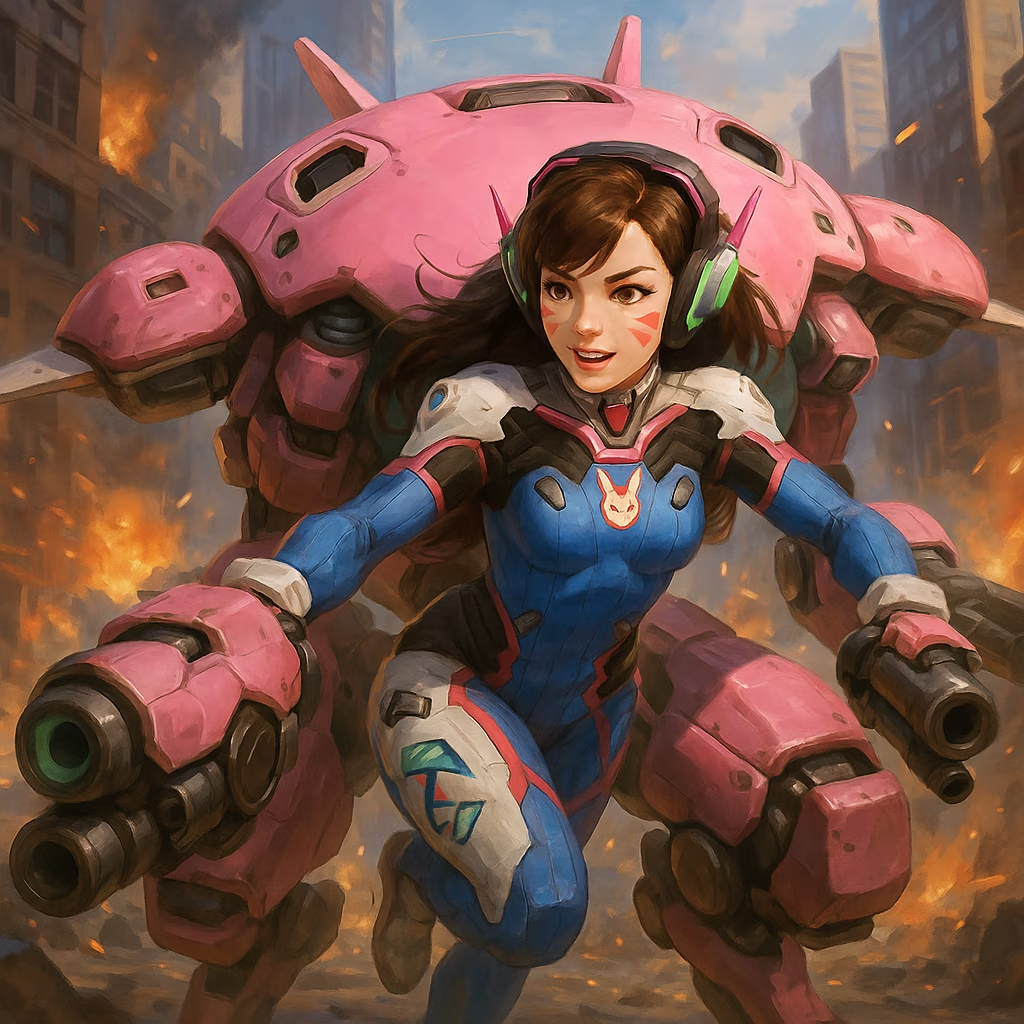Discover Overwatch 2's innovative Stadium mode with customizable powers and items, transforming gameplay and strategic depth for all 17 heroes.
Blizzard has pulled back the curtain on the complete collection of Powers and Items that will be available in Overwatch 2's highly anticipated Stadium game mode. With Season 16 now underway, players are discovering the staggering variety of customization options spread across all 17 launch heroes, creating virtually limitless possibilities for strategic gameplay.
Stadium represents a bold new direction for the Overwatch franchise, introducing a best-of-seven format that fundamentally transforms the traditional hero shooter experience. Between rounds, players visit the Armory where they can spend Stadium Cash to purchase Items or select game-changing Powers that dramatically alter their hero's capabilities.

The newly revealed infographic details the extensive customization options available to each hero, though eagle-eyed fans have already spotted an error where Orisa's Survival Items were mistakenly replaced with D.Va's options. Will Blizzard address this oversight before players dive into the mode, or are Orisa mains destined to discover their defensive options through trial and error?
Understanding Stadium's Economy
Stadium Cash serves as the mode's in-game currency, accumulated through:
-
Passive earnings each round
-
Eliminating designated Bounty targets
-
Selling previously purchased Items
This economic system forces players to make critical decisions about resource allocation. Should you save for that game-changing Epic Item, or invest in multiple Common upgrades for immediate impact? The tension between short-term advantages and long-term strategy adds a fascinating layer to Overwatch's traditionally straightforward gameplay.
Item Rarities and Categories
Items come in three distinct rarities:
-
Common - Basic enhancements at affordable prices
-
Rare - Substantial improvements with moderate costs
-
Epic - Game-changing upgrades commanding premium prices
Beyond rarity, Items fall into three functional categories:
| Category | Function | Examples |
|---|---|---|
| Weapon Items | Enhance primary/secondary fire | Increased damage, faster reload |
| Ability Items | Improve special skills | Reduced cooldowns, enhanced effects |
| Survival Items | Boost sustainability | Health regeneration, damage reduction |
While many Items appear across multiple heroes' inventories, each character also boasts unique options tailored to their specific abilities. Reinhardt's shield might gain explosive properties, while Mercy's healing beam could chain to nearby allies. These hero-specific Items promise to create distinctive playstyles even among players using the same character.
Powers: Free but Permanent Choices
Unlike Items, Powers don't cost Stadium Cash but represent more consequential decisions. Players select Powers before rounds one, three, five, and seven, with each choice permanently altering their hero's capabilities for the remainder of the match.
Some standout Powers revealed include:
-
Ana's "Our Turn" - Transforms her Nano Boost into an area-of-effect ultimate
-
Reinhardt's "Magma Strike" - Fire Strike leaves damaging lava trails
-
Ashe's "B.O.B. Junior" - Summons a smaller B.O.B. at half the ultimate cost
The permanence of Power selections introduces a fascinating risk-reward dynamic. Choose a Power that synergizes perfectly with your team's current strategy, and you might dominate the next round. But what happens when the enemy team adapts? Can your fixed Powers remain effective as the match evolves?
Strategic Implications
Stadium's extensive customization options fundamentally alter Overwatch 2's strategic landscape. Traditional hero counters may become less relevant when a well-itemized Zenyatta suddenly gains unprecedented mobility, or a damage-boosted Mercy transforms into a lethal threat.
Team composition takes on new dimensions as well. Should all players focus on complementary Powers that execute a unified strategy? Or is diversity the better approach, with each player specializing in a different tactical role?
The mode also introduces interesting questions about resource allocation within teams. Is it better to funnel Stadium Cash toward a star player, creating a super-powered carry? Or should resources be distributed evenly to ensure the entire team remains competitive?
Looking Ahead
While Stadium launches with 17 heroes and nine maps, Blizzard has confirmed that additional characters and arenas will join the rotation in future updates. The developer has also hinted that certain Powers may be cycled out periodically, suggesting that Stadium's meta will remain fluid and evolving.
As the mode goes live, players will undoubtedly discover unexpected synergies and perhaps even game-breaking combinations that Blizzard never anticipated. How quickly will the developers respond to balance concerns? Will Stadium receive the same level of competitive attention as the core game modes?
For now, Overwatch enthusiasts are eagerly diving into this revolutionary game mode, experimenting with builds and sharing discoveries across social media. Whether Stadium becomes a beloved mainstay or a short-lived experiment, it represents one of the most ambitious evolutions in Overwatch's history.
Have you discovered any particularly powerful item and power combinations yet? Or are you still theorycrafting the perfect build for your main? The Stadium awaits, and the possibilities seem almost endless.
